-
78articlesSort byLatested
 Dysbiosis as a common pathogenetic mechanism in psoriasis and gastrointestinal diseasesOpen AccessLetter to the EditorChristos ZavosPublished: January 10, 2025 Explor Musculoskeletal Dis. DOI: 10.37349/emd.2025.100778
Dysbiosis as a common pathogenetic mechanism in psoriasis and gastrointestinal diseasesOpen AccessLetter to the EditorChristos ZavosPublished: January 10, 2025 Explor Musculoskeletal Dis. DOI: 10.37349/emd.2025.100778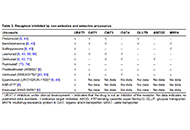 How URAT1 inhibitors can shape the future of chronic gout treatment: a narrative review of uricosurics past and presentOpen AccessReviewGout is a common inflammatory arthritis preceded by chronically elevated levels of serum urate. In addition to leading to gouty flares, hyperuricemia can result in stone-like deposits of monosodium ...Robert T. Keenan ... Michael H. PillingerPublished: December 12, 2024 Explor Musculoskeletal Dis. DOI: 10.37349/emd.2024.00077
How URAT1 inhibitors can shape the future of chronic gout treatment: a narrative review of uricosurics past and presentOpen AccessReviewGout is a common inflammatory arthritis preceded by chronically elevated levels of serum urate. In addition to leading to gouty flares, hyperuricemia can result in stone-like deposits of monosodium ...Robert T. Keenan ... Michael H. PillingerPublished: December 12, 2024 Explor Musculoskeletal Dis. DOI: 10.37349/emd.2024.00077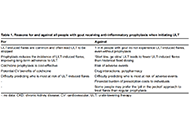 Should all people starting urate-lowering therapy for gout receive anti-inflammatory prophylaxis?Open AccessCommentaryCo-prescription of anti-inflammatory prophylaxis with colchicine, non-steroidal anti-inflammatory drugs (NSAIDs), or corticosteroids when initiating urate-lowering therapy (ULT) for gout is recommen...Edward Roddy ... Christian D. MallenPublished: November 15, 2024 Explor Musculoskeletal Dis. DOI: 10.37349/emd.2024.00076
Should all people starting urate-lowering therapy for gout receive anti-inflammatory prophylaxis?Open AccessCommentaryCo-prescription of anti-inflammatory prophylaxis with colchicine, non-steroidal anti-inflammatory drugs (NSAIDs), or corticosteroids when initiating urate-lowering therapy (ULT) for gout is recommen...Edward Roddy ... Christian D. MallenPublished: November 15, 2024 Explor Musculoskeletal Dis. DOI: 10.37349/emd.2024.00076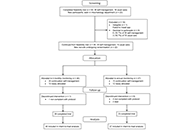 Evaluation of continued 2-monthly or annual urate monitoring in gout: an extension of the GoutSMART randomised controlled feasibility trialOpen AccessOriginal ArticleAim: Improved outcomes for patients with gout are associated with reduced urate levels and many guidelines recommend regular urate monitoring. There is no consensus on how frequently monitoring s...Philip L. Riches ... Amrey KrausePublished: November 11, 2024 Explor Musculoskeletal Dis. DOI: 10.37349/emd.2024.00075
Evaluation of continued 2-monthly or annual urate monitoring in gout: an extension of the GoutSMART randomised controlled feasibility trialOpen AccessOriginal ArticleAim: Improved outcomes for patients with gout are associated with reduced urate levels and many guidelines recommend regular urate monitoring. There is no consensus on how frequently monitoring s...Philip L. Riches ... Amrey KrausePublished: November 11, 2024 Explor Musculoskeletal Dis. DOI: 10.37349/emd.2024.00075 Addressing weight loss management in obese gout patients: guidance for future trialsOpen AccessCommentaryObesity is widely recognized as being associated with both the onset and advancement of gout, exerting a detrimental effect on health outcomes in society. In the realm of gout management, theoretica...Robin Christensen ... Lisa K. StampPublished: November 07, 2024 Explor Musculoskeletal Dis. DOI: 10.37349/emd.2024.00074
Addressing weight loss management in obese gout patients: guidance for future trialsOpen AccessCommentaryObesity is widely recognized as being associated with both the onset and advancement of gout, exerting a detrimental effect on health outcomes in society. In the realm of gout management, theoretica...Robin Christensen ... Lisa K. StampPublished: November 07, 2024 Explor Musculoskeletal Dis. DOI: 10.37349/emd.2024.00074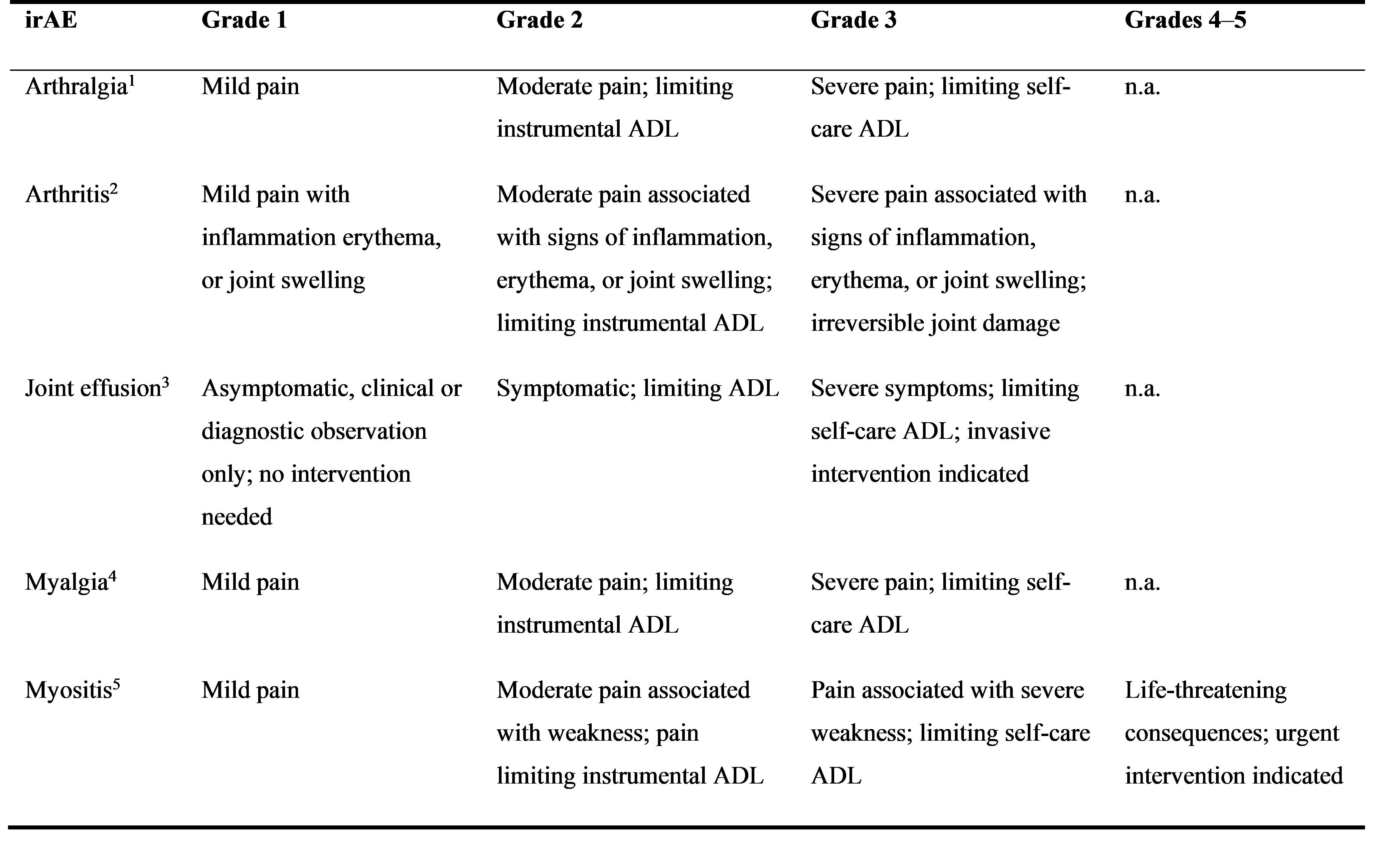 Can Janus kinase inhibitors be used to treat immune checkpoint inhibitor associated adverse events?Open AccessMini ReviewImmune checkpoint inhibitors (ICI) such as cytotoxic T-lymphocyte associated protein-4 (CTLA-4), programmed cell death-1 (PD-1), programmed death ligand-1 (PD-L1), and lymphocyte activation gene-3 (...Jürgen Braun, Kirsten KarbergPublished: November 04, 2024 Explor Musculoskeletal Dis. DOI: 10.37349/emd.2024.00073
Can Janus kinase inhibitors be used to treat immune checkpoint inhibitor associated adverse events?Open AccessMini ReviewImmune checkpoint inhibitors (ICI) such as cytotoxic T-lymphocyte associated protein-4 (CTLA-4), programmed cell death-1 (PD-1), programmed death ligand-1 (PD-L1), and lymphocyte activation gene-3 (...Jürgen Braun, Kirsten KarbergPublished: November 04, 2024 Explor Musculoskeletal Dis. DOI: 10.37349/emd.2024.00073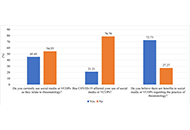 The impact of social media and online communities of practice in rheumatologyOpen AccessReviewThe COVID-19 pandemic changed healthcare practices and social media played a significant role in those changes. While social media and online practice communities allow collaboration and engagement,...Judy L. Seraphine, Alvin F. WellsPublished: October 30, 2024 Explor Musculoskeletal Dis. DOI: 10.37349/emd.2024.00072
The impact of social media and online communities of practice in rheumatologyOpen AccessReviewThe COVID-19 pandemic changed healthcare practices and social media played a significant role in those changes. While social media and online practice communities allow collaboration and engagement,...Judy L. Seraphine, Alvin F. WellsPublished: October 30, 2024 Explor Musculoskeletal Dis. DOI: 10.37349/emd.2024.00072 Bridging the evidence-practice gap for people with goutOpen AccessCommentaryGout is a common and disabling form of arthritis. Despite widely available, highly effective, urate-lowering therapies, such as allopurinol, studies continue to demonstrate poor care for individuals...Mark D. Russell, James B. GallowayPublished: October 23, 2024 Explor Musculoskeletal Dis. DOI: 10.37349/emd.2024.00071
Bridging the evidence-practice gap for people with goutOpen AccessCommentaryGout is a common and disabling form of arthritis. Despite widely available, highly effective, urate-lowering therapies, such as allopurinol, studies continue to demonstrate poor care for individuals...Mark D. Russell, James B. GallowayPublished: October 23, 2024 Explor Musculoskeletal Dis. DOI: 10.37349/emd.2024.00071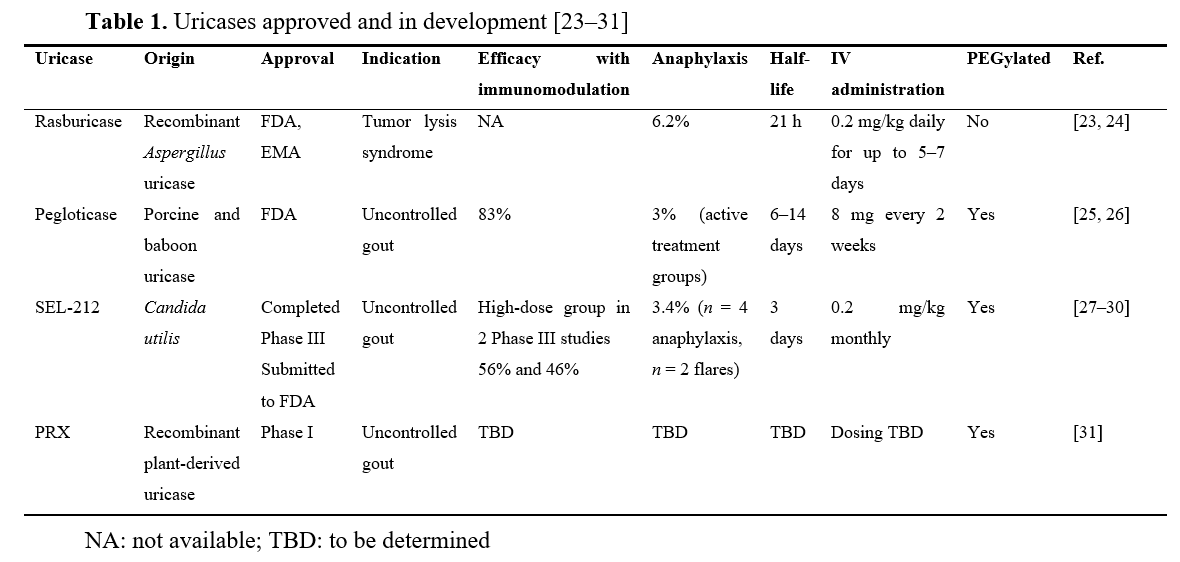 Uricases: reflections on recent developments in the management of challenging gout patientsOpen AccessReviewOral urate-lowering therapy (ULT) is key to treating gout. However, many patients receiving oral ULT do not achieve the target serum urate (SU) levels, partly because some patients cannot tolerate o...Naomi Schlesinger, Dan KaufmannPublished: October 02, 2024 Explor Musculoskeletal Dis. DOI: 10.37349/emd.2024.00070
Uricases: reflections on recent developments in the management of challenging gout patientsOpen AccessReviewOral urate-lowering therapy (ULT) is key to treating gout. However, many patients receiving oral ULT do not achieve the target serum urate (SU) levels, partly because some patients cannot tolerate o...Naomi Schlesinger, Dan KaufmannPublished: October 02, 2024 Explor Musculoskeletal Dis. DOI: 10.37349/emd.2024.00070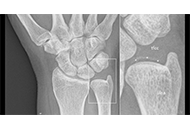 CPPD—differential diagnostics and differential therapeutic challengesOpen AccessReviewCalcium pyrophosphate deposition disease (CPPD), characterized by the presence of calcium pyrophosphate crystals in and around joints, poses diagnostic and therapeutic challenges in rheumatology. Th...Maria L. Voulgari, Herbert KellnerPublished: September 25, 2024 Explor Musculoskeletal Dis. DOI: 10.37349/emd.2024.00069
CPPD—differential diagnostics and differential therapeutic challengesOpen AccessReviewCalcium pyrophosphate deposition disease (CPPD), characterized by the presence of calcium pyrophosphate crystals in and around joints, poses diagnostic and therapeutic challenges in rheumatology. Th...Maria L. Voulgari, Herbert KellnerPublished: September 25, 2024 Explor Musculoskeletal Dis. DOI: 10.37349/emd.2024.00069 Factors associated with interstitial lung disease in patients with rheumatoid arthritisOpen AccessOriginal ArticleAim: Interstitial lung disease (ILD) is a significant extra-articular manifestation of rheumatoid arthritis (RA). The prevalence and risk factors for ILD in RA exhibit considerable variation. Thi...Benyapa Suppa-Udom ... Wanruchada KatchamartPublished: September 14, 2024 Explor Musculoskeletal Dis. DOI: 10.37349/emd.2024.00068
Factors associated with interstitial lung disease in patients with rheumatoid arthritisOpen AccessOriginal ArticleAim: Interstitial lung disease (ILD) is a significant extra-articular manifestation of rheumatoid arthritis (RA). The prevalence and risk factors for ILD in RA exhibit considerable variation. Thi...Benyapa Suppa-Udom ... Wanruchada KatchamartPublished: September 14, 2024 Explor Musculoskeletal Dis. DOI: 10.37349/emd.2024.00068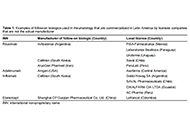 Selecting the best-value biosimilar in emerging countriesOpen AccessPerspectiveThe aim of biosimilars is to alleviate the financial burden of biological medicinal products. A most relevant challenge for emerging countries is how to select the best option available. In most cas...Gilberto Castañeda-HernándezPublished: September 14, 2024 Explor Musculoskeletal Dis. DOI: 10.37349/emd.2024.00067
Selecting the best-value biosimilar in emerging countriesOpen AccessPerspectiveThe aim of biosimilars is to alleviate the financial burden of biological medicinal products. A most relevant challenge for emerging countries is how to select the best option available. In most cas...Gilberto Castañeda-HernándezPublished: September 14, 2024 Explor Musculoskeletal Dis. DOI: 10.37349/emd.2024.00067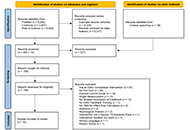 Role and effectiveness of surface EMG feedback in sports and orthopedic rehabilitation: a systematic reviewOpen AccessSystematic ReviewBackground: The aim of the study was to conduct a literature review within the fields of sports and orthopedic rehabilitation to evaluate the efficacy of interventions incorporating electromyogra...Thomas Haab ... Paul BurkeyPublished: September 12, 2024 Explor Musculoskeletal Dis. DOI: 10.37349/emd.2024.00065
Role and effectiveness of surface EMG feedback in sports and orthopedic rehabilitation: a systematic reviewOpen AccessSystematic ReviewBackground: The aim of the study was to conduct a literature review within the fields of sports and orthopedic rehabilitation to evaluate the efficacy of interventions incorporating electromyogra...Thomas Haab ... Paul BurkeyPublished: September 12, 2024 Explor Musculoskeletal Dis. DOI: 10.37349/emd.2024.00065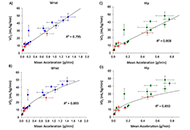 Nonlinear modification to Hildebrand equation for accelerometry assessment of physical activity: improved accuracy for low activity levelsOpen AccessOriginal ArticleAim: Physical activity (PA) is increasingly used as a patient-centered means to treat and/or cope with pain and other symptomology resulting from clinical health conditions. Despite the increasin...Laura A. Frey-Law ... Kathleen A. SlukaPublished: September 13, 2024 Explor Musculoskeletal Dis. DOI: 10.37349/emd.2024.00066
Nonlinear modification to Hildebrand equation for accelerometry assessment of physical activity: improved accuracy for low activity levelsOpen AccessOriginal ArticleAim: Physical activity (PA) is increasingly used as a patient-centered means to treat and/or cope with pain and other symptomology resulting from clinical health conditions. Despite the increasin...Laura A. Frey-Law ... Kathleen A. SlukaPublished: September 13, 2024 Explor Musculoskeletal Dis. DOI: 10.37349/emd.2024.00066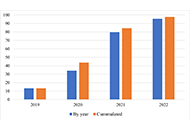 Successful implementation of interchange of biologic medications in chronic arthritis after information of costs to prescribersOpen AccessOriginal ArticleAim: To evaluate the impact of prescription, cost, and switching policy on the rate of switching from reference products to biosimilars. Methods: Analysis of an administrative database for ...Fernando Perez-Ruiz ... Amaya de Basagoiti-GorordoPublished: September 10, 2024 Explor Musculoskeletal Dis. DOI: 10.37349/emd.2024.00064
Successful implementation of interchange of biologic medications in chronic arthritis after information of costs to prescribersOpen AccessOriginal ArticleAim: To evaluate the impact of prescription, cost, and switching policy on the rate of switching from reference products to biosimilars. Methods: Analysis of an administrative database for ...Fernando Perez-Ruiz ... Amaya de Basagoiti-GorordoPublished: September 10, 2024 Explor Musculoskeletal Dis. DOI: 10.37349/emd.2024.00064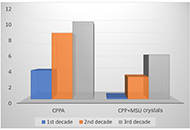 Prevalence and factors associated to calcium pyrophosphate arthritis in patients with goutOpen AccessOriginal ArticleAim: To ascertain the prevalence of calcium pyrophosphate arthritis (CPPA) at diagnosis and during follow-up of patients with gout. Methods: Inception cohort of patients with gout prospecti...Fernando Perez-Ruiz ... Frédéric LiotéPublished: September 10, 2024 Explor Musculoskeletal Dis. DOI: 10.37349/emd.2024.00063
Prevalence and factors associated to calcium pyrophosphate arthritis in patients with goutOpen AccessOriginal ArticleAim: To ascertain the prevalence of calcium pyrophosphate arthritis (CPPA) at diagnosis and during follow-up of patients with gout. Methods: Inception cohort of patients with gout prospecti...Fernando Perez-Ruiz ... Frédéric LiotéPublished: September 10, 2024 Explor Musculoskeletal Dis. DOI: 10.37349/emd.2024.00063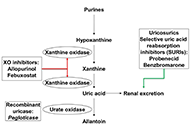 Safety and efficacy of gout treatments in people with renal impairmentOpen AccessReviewGout is common in people with chronic kidney disease and in general is sub-optimally managed. Lack of evidence due to the exclusion of people with chronic kidney disease from the majority of clinica...Hamish Farquhar ... Lisa K. StampPublished: September 02, 2024 Explor Musculoskeletal Dis. DOI: 10.37349/emd.2024.00062
Safety and efficacy of gout treatments in people with renal impairmentOpen AccessReviewGout is common in people with chronic kidney disease and in general is sub-optimally managed. Lack of evidence due to the exclusion of people with chronic kidney disease from the majority of clinica...Hamish Farquhar ... Lisa K. StampPublished: September 02, 2024 Explor Musculoskeletal Dis. DOI: 10.37349/emd.2024.00062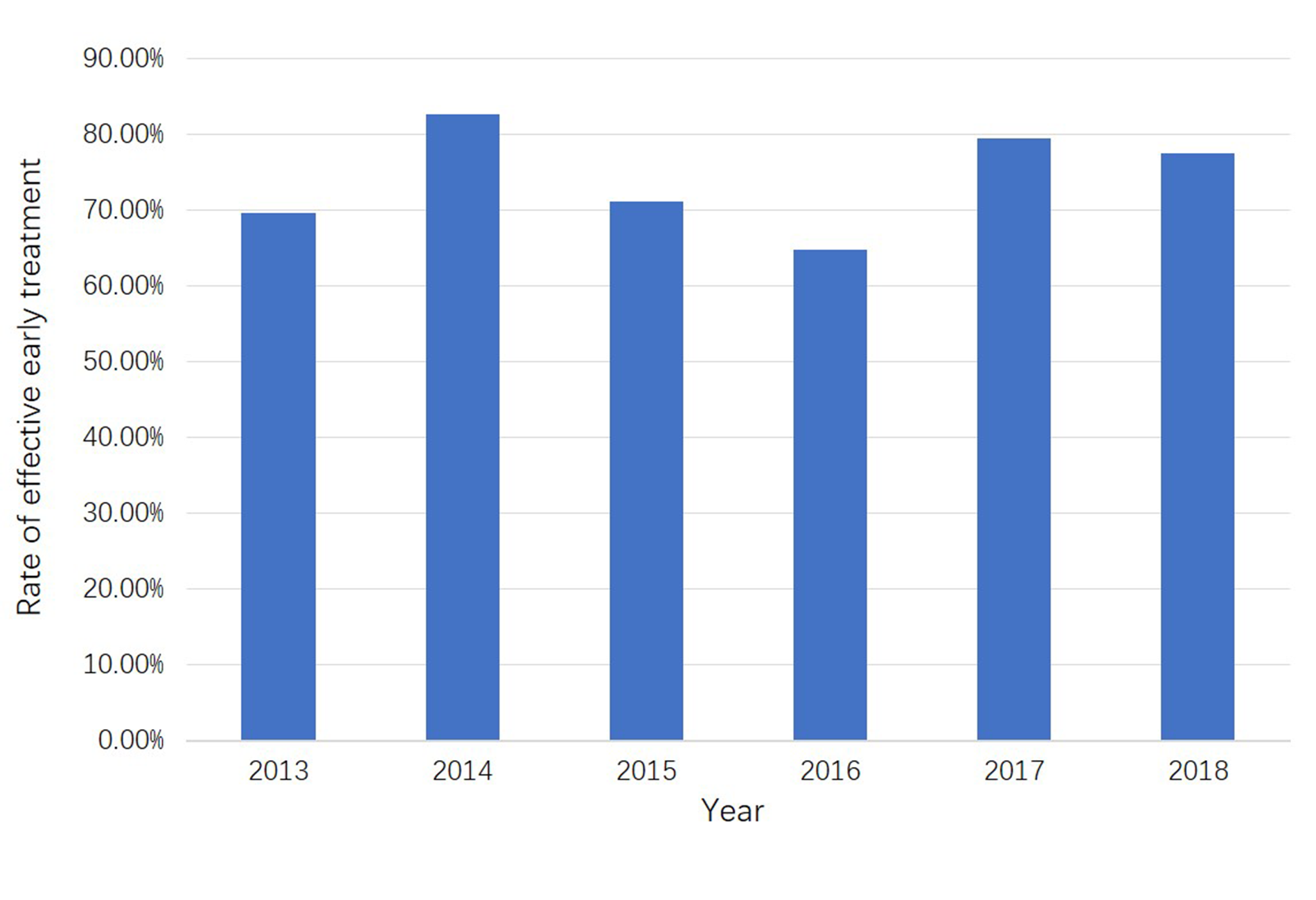 Experience in the application of the Graf technique in BeijingOpen AccessOriginal ArticleAim: The aim was to review several aspects of work using ultrasound in diagnosing developmental dysplasia of the hip and analyze the application status of the Graf technique in Beijing over 15 ye...Jingnan He ... Xuemin LyuPublished: July 31, 2024 Explor Musculoskeletal Dis. DOI: 10.37349/emd.2024.00061
Experience in the application of the Graf technique in BeijingOpen AccessOriginal ArticleAim: The aim was to review several aspects of work using ultrasound in diagnosing developmental dysplasia of the hip and analyze the application status of the Graf technique in Beijing over 15 ye...Jingnan He ... Xuemin LyuPublished: July 31, 2024 Explor Musculoskeletal Dis. DOI: 10.37349/emd.2024.00061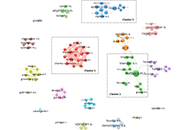 Work-related musculoskeletal disorders among surgeons: a bibliometric analysis from 1982 to 2024Open AccessReviewSurgeons are exposed to a high prevalence of work-related musculoskeletal disorders (WMSDs). The scientific issues surrounding this problem are generating a growing body of work. The aim of this stu...Philippe Gorce, Julien Jacquier-BretPublished: July 30, 2024 Explor Musculoskeletal Dis. DOI: 10.37349/emd.2024.00059
Work-related musculoskeletal disorders among surgeons: a bibliometric analysis from 1982 to 2024Open AccessReviewSurgeons are exposed to a high prevalence of work-related musculoskeletal disorders (WMSDs). The scientific issues surrounding this problem are generating a growing body of work. The aim of this stu...Philippe Gorce, Julien Jacquier-BretPublished: July 30, 2024 Explor Musculoskeletal Dis. DOI: 10.37349/emd.2024.00059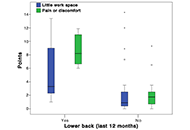 Ergonomic evaluation of assembly line work activity in the automotive industry: a case studyOpen AccessCase ReportThe automotive industry is growing worldwide with new technologies and seeking maximum cost savings. This sector is essential for the economic development of the country, with modern industries that...Raquel Ferreira Araruna de Carvalho, Márcio Alves MarçalPublished: July 30, 2024 Explor Musculoskeletal Dis. DOI: 10.37349/emd.2024.00060
Ergonomic evaluation of assembly line work activity in the automotive industry: a case studyOpen AccessCase ReportThe automotive industry is growing worldwide with new technologies and seeking maximum cost savings. This sector is essential for the economic development of the country, with modern industries that...Raquel Ferreira Araruna de Carvalho, Márcio Alves MarçalPublished: July 30, 2024 Explor Musculoskeletal Dis. DOI: 10.37349/emd.2024.00060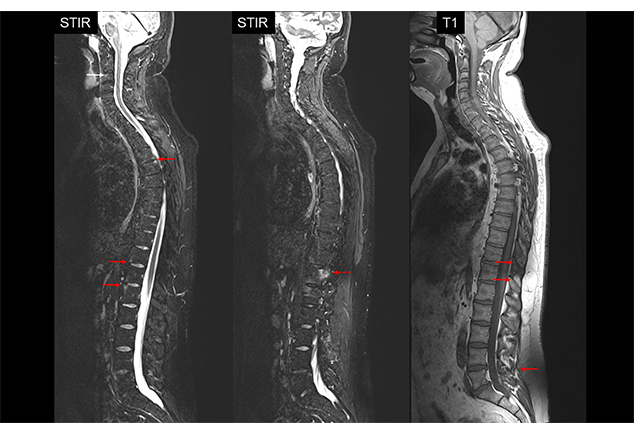 Axial spondyloarthritis—current aspectsOpen AccessReviewAxial spondyloarthritis (axSpA) is a frequent inflammatory rheumatic disease mainly affecting the axial skeleton causing inflammatory back pain. If chronic inflammation persists new bone formation may occur possibly leading to irreversible spinal stiffness. The disease has a strong genetic background with HLA-B27 as the major factor. For diagnostic purposes, imaging is of critical importance—especially conventional radiography and magnetic resonance imaging (MRI). While the former has advantages in the detection of bony changes such as the syndesmophytes, MRI is used to detect axial inflammation but also erosions in the sacroiliac joint. Treatment follows the treat-to-target strategy starting with non-steroidal ...Jürgen Braun, Denis PoddubnyyPublished: July 24, 2024 Explor Musculoskeletal Dis. DOI: 10.37349/emd.2024.00058
Axial spondyloarthritis—current aspectsOpen AccessReviewAxial spondyloarthritis (axSpA) is a frequent inflammatory rheumatic disease mainly affecting the axial skeleton causing inflammatory back pain. If chronic inflammation persists new bone formation may occur possibly leading to irreversible spinal stiffness. The disease has a strong genetic background with HLA-B27 as the major factor. For diagnostic purposes, imaging is of critical importance—especially conventional radiography and magnetic resonance imaging (MRI). While the former has advantages in the detection of bony changes such as the syndesmophytes, MRI is used to detect axial inflammation but also erosions in the sacroiliac joint. Treatment follows the treat-to-target strategy starting with non-steroidal ...Jürgen Braun, Denis PoddubnyyPublished: July 24, 2024 Explor Musculoskeletal Dis. DOI: 10.37349/emd.2024.00058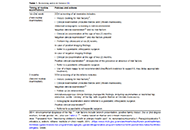 Screening for developmental dysplasia of the hip in Greece: current practice and future perspectivesOpen AccessMini ReviewScreening for developmental dysplasia of the hip (DDH) in Greece is being performed according to the guidelines issued by the Institute of Child Health in 2015. Screening strategies include universa...Konstantinos Chlapoutakis ... Maria RaissakiPublished: July 18, 2024 Explor Musculoskeletal Dis. DOI: 10.37349/emd.2024.00054
Screening for developmental dysplasia of the hip in Greece: current practice and future perspectivesOpen AccessMini ReviewScreening for developmental dysplasia of the hip (DDH) in Greece is being performed according to the guidelines issued by the Institute of Child Health in 2015. Screening strategies include universa...Konstantinos Chlapoutakis ... Maria RaissakiPublished: July 18, 2024 Explor Musculoskeletal Dis. DOI: 10.37349/emd.2024.00054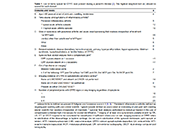 Calcium pyrophosphate deposition disease: points to be considered for quality assurance in clinical practiceOpen AccessReviewCalcium pyrophosphate deposition disease is known as crowned dens syndrome or peripheral arthritis, especially of knees, hips and shoulders. The disease course is asymptomatic, with acute or chronic...Michael Schirmer, Johannes Dominikus PalluaPublished: July 18, 2024 Explor Musculoskeletal Dis. DOI: 10.37349/emd.2024.00055
Calcium pyrophosphate deposition disease: points to be considered for quality assurance in clinical practiceOpen AccessReviewCalcium pyrophosphate deposition disease is known as crowned dens syndrome or peripheral arthritis, especially of knees, hips and shoulders. The disease course is asymptomatic, with acute or chronic...Michael Schirmer, Johannes Dominikus PalluaPublished: July 18, 2024 Explor Musculoskeletal Dis. DOI: 10.37349/emd.2024.00055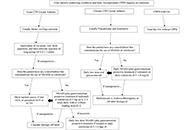 Treatment strategies for calcium pyrophosphate deposition diseaseOpen AccessReviewCalcium pyrophosphate deposition disease (CPPD) is a cause of inflammatory arthropathy that increases in prevalence with increasing age, presents in acute and chronic forms, and is characterized by ...Anna J. Turlej, Angelo L. GaffoPublished: July 19, 2024 Explor Musculoskeletal Dis. DOI: 10.37349/emd.2024.00056
Treatment strategies for calcium pyrophosphate deposition diseaseOpen AccessReviewCalcium pyrophosphate deposition disease (CPPD) is a cause of inflammatory arthropathy that increases in prevalence with increasing age, presents in acute and chronic forms, and is characterized by ...Anna J. Turlej, Angelo L. GaffoPublished: July 19, 2024 Explor Musculoskeletal Dis. DOI: 10.37349/emd.2024.00056 Sarcopenia, a hidden comorbidity of established rheumatoid arthritisOpen AccessEditorialThis editorial, “Sarcopenia: a hidden comorbidity of established rheumatoid arthritis” emphasizes the critical role of addressing comorbidities in rheumatoid arthritis (RA) management, focusing particularly on the clinical impact of sarcopenia. The first section highlights how advances in treating immune-mediated rheumatic diseases have improved RA management but also underscore the increasing necessity to integrate comorbidity management to enhance patient outcomes. The second part focused into sarcopenia as a significant yet overlooked comorbidity in RA, discussing its prevalence, impact on life quality, and the complexities of its diagnosis and management. The editorial advocates for a multidisciplinary approach involving rheumatologists, nurses, and primary care physicians to effectively tackle this issue. A call to action from scientific societies is suggested to raise awareness among healthcare professionals about sarcopenia, aiming to improve care for RA patients....Joan M. NollaPublished: July 19, 2024 Explor Musculoskeletal Dis. DOI: 10.37349/emd.2024.00057
Sarcopenia, a hidden comorbidity of established rheumatoid arthritisOpen AccessEditorialThis editorial, “Sarcopenia: a hidden comorbidity of established rheumatoid arthritis” emphasizes the critical role of addressing comorbidities in rheumatoid arthritis (RA) management, focusing particularly on the clinical impact of sarcopenia. The first section highlights how advances in treating immune-mediated rheumatic diseases have improved RA management but also underscore the increasing necessity to integrate comorbidity management to enhance patient outcomes. The second part focused into sarcopenia as a significant yet overlooked comorbidity in RA, discussing its prevalence, impact on life quality, and the complexities of its diagnosis and management. The editorial advocates for a multidisciplinary approach involving rheumatologists, nurses, and primary care physicians to effectively tackle this issue. A call to action from scientific societies is suggested to raise awareness among healthcare professionals about sarcopenia, aiming to improve care for RA patients....Joan M. NollaPublished: July 19, 2024 Explor Musculoskeletal Dis. DOI: 10.37349/emd.2024.00057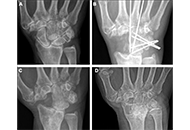 Progression of arthritis after four-corner fusion in patients with calcium pyrophosphate deposition disease: a case series of eleven patientsOpen AccessOriginal ArticleAim: The purpose of this study is to evaluate outcomes and radiographic progression of wrist arthritis after four-corner fusion (4CF) in patients with evidence of calcium pyrophosphate deposition...John F. Hoy ... Xavier C. SimcockPublished: July 10, 2024 Explor Musculoskeletal Dis. DOI: 10.37349/emd.2024.00053
Progression of arthritis after four-corner fusion in patients with calcium pyrophosphate deposition disease: a case series of eleven patientsOpen AccessOriginal ArticleAim: The purpose of this study is to evaluate outcomes and radiographic progression of wrist arthritis after four-corner fusion (4CF) in patients with evidence of calcium pyrophosphate deposition...John F. Hoy ... Xavier C. SimcockPublished: July 10, 2024 Explor Musculoskeletal Dis. DOI: 10.37349/emd.2024.00053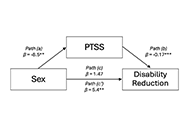 Sex differences in response to rehabilitation treatment for musculoskeletal pain: the mediating role of post-traumatic stress symptomsOpen AccessOriginal ArticleAim: Numerous investigations have revealed sex differences in recovery outcomes in individuals who have sustained work-related musculoskeletal injuries (WRMIs). Previous research has also reveale...Antonina D.S. Pavilanis ... Michael J.L. SullivanPublished: June 26, 2024 Explor Musculoskeletal Dis. DOI: 10.37349/emd.2024.00052
Sex differences in response to rehabilitation treatment for musculoskeletal pain: the mediating role of post-traumatic stress symptomsOpen AccessOriginal ArticleAim: Numerous investigations have revealed sex differences in recovery outcomes in individuals who have sustained work-related musculoskeletal injuries (WRMIs). Previous research has also reveale...Antonina D.S. Pavilanis ... Michael J.L. SullivanPublished: June 26, 2024 Explor Musculoskeletal Dis. DOI: 10.37349/emd.2024.00052 How to treat a patient with psoriatic arthritis and chronic lymphocytic leukemia?Open AccessCase ReportA 76-year-old male patient who has been suffering from psoriatic arthritis (PsA) for 15 years was diagnosed with chronic lymphocytic leukemia (CLL) 18 months ago. He has been treated him with a Brut...Jürgen Braun ... Denis PoddubnyyPublished: June 20, 2024 Explor Musculoskeletal Dis. DOI: 10.37349/emd.2024.00051
How to treat a patient with psoriatic arthritis and chronic lymphocytic leukemia?Open AccessCase ReportA 76-year-old male patient who has been suffering from psoriatic arthritis (PsA) for 15 years was diagnosed with chronic lymphocytic leukemia (CLL) 18 months ago. He has been treated him with a Brut...Jürgen Braun ... Denis PoddubnyyPublished: June 20, 2024 Explor Musculoskeletal Dis. DOI: 10.37349/emd.2024.00051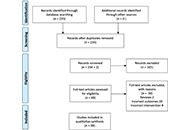 Obesity in rheumatoid arthritis: impact on response to biologic therapiesOpen AccessSystematic ReviewBackground: We performed a service evaluation of local patients with rheumatoid arthritis (RA) treated with biologic or targeted systemic disease-modifying anti-rheumatic drug (b/ts)DMARDs to see...Zehra Irshad, Nicola J. GullickPublished: June 12, 2024 Explor Musculoskeletal Dis. DOI: 10.37349/emd.2024.00050
Obesity in rheumatoid arthritis: impact on response to biologic therapiesOpen AccessSystematic ReviewBackground: We performed a service evaluation of local patients with rheumatoid arthritis (RA) treated with biologic or targeted systemic disease-modifying anti-rheumatic drug (b/ts)DMARDs to see...Zehra Irshad, Nicola J. GullickPublished: June 12, 2024 Explor Musculoskeletal Dis. DOI: 10.37349/emd.2024.00050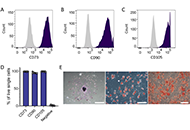 Mesenchymal stromal cells from people with osteoporosis are fewer, and defective in both osteogenic and adipogenic capacityOpen AccessOriginal ArticleAim: Osteoporosis (OP) is caused by imbalanced bone remodelling homeostasis. It is highly prevalent, especially in post-menopausal women, resulting in high risk of fracture and morbidity. Mesench...Féaron C. Cassidy ... Cynthia M. ColemanPublished: June 03, 2024 Explor Musculoskeletal Dis. DOI: 10.37349/emd.2024.00046
Mesenchymal stromal cells from people with osteoporosis are fewer, and defective in both osteogenic and adipogenic capacityOpen AccessOriginal ArticleAim: Osteoporosis (OP) is caused by imbalanced bone remodelling homeostasis. It is highly prevalent, especially in post-menopausal women, resulting in high risk of fracture and morbidity. Mesench...Féaron C. Cassidy ... Cynthia M. ColemanPublished: June 03, 2024 Explor Musculoskeletal Dis. DOI: 10.37349/emd.2024.00046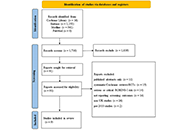 A systematic review of DDH screening practices in the UKOpen AccessSystematic ReviewBackground: The United Kingdom (UK) currently employs a selective screening system for developmental dysplasia of the hip (DDH). Despite this, late presentation rates remain high. The aim of this...Nicholas Birkett ... Claudia MaizenPublished: June 03, 2024 Explor Musculoskeletal Dis. DOI: 10.37349/emd.2024.00047
A systematic review of DDH screening practices in the UKOpen AccessSystematic ReviewBackground: The United Kingdom (UK) currently employs a selective screening system for developmental dysplasia of the hip (DDH). Despite this, late presentation rates remain high. The aim of this...Nicholas Birkett ... Claudia MaizenPublished: June 03, 2024 Explor Musculoskeletal Dis. DOI: 10.37349/emd.2024.00047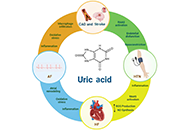 Uric acid in atherosclerosis and cardiovascular diseases: innocent bystander or ruthless killer?Open AccessReviewMedical attention to uric acid (UA) has been increasing in recent years, mainly because this molecule has been shown to be associated with increased cardiovascular risk, both in the general populati...Giovanni Cimmino ... Plinio CirilloPublished: June 03, 2024 Explor Musculoskeletal Dis. DOI: 10.37349/emd.2024.00048
Uric acid in atherosclerosis and cardiovascular diseases: innocent bystander or ruthless killer?Open AccessReviewMedical attention to uric acid (UA) has been increasing in recent years, mainly because this molecule has been shown to be associated with increased cardiovascular risk, both in the general populati...Giovanni Cimmino ... Plinio CirilloPublished: June 03, 2024 Explor Musculoskeletal Dis. DOI: 10.37349/emd.2024.00048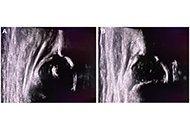 Universal screening for developmental dysplasia of the hip in Austria: what have we learned?Open AccessPerspectiveHip ultrasound, according to Graf, is a standardized sonographic method for the detection of developmental dysplasia of the hip (DDH) during the neonatal period. Graf established his method during t...Tanja Kraus, Catharina ChiariPublished: June 03, 2024 Explor Musculoskeletal Dis. DOI: 10.37349/emd.2024.00049
Universal screening for developmental dysplasia of the hip in Austria: what have we learned?Open AccessPerspectiveHip ultrasound, according to Graf, is a standardized sonographic method for the detection of developmental dysplasia of the hip (DDH) during the neonatal period. Graf established his method during t...Tanja Kraus, Catharina ChiariPublished: June 03, 2024 Explor Musculoskeletal Dis. DOI: 10.37349/emd.2024.00049 The reality of sonography of the infant hip in Brazil: results and recommendationsOpen AccessReviewSince 1980, when Professor Reinhard Graf developed a novel technique, sonography of the infant hip has played a prominent role in the early diagnosis of developmental dysplasia of the hip (DDH). Bra...Giovanna Galvão Braga Motta ... Alexandre Francisco de LourençoPublished: May 20, 2024 Explor Musculoskeletal Dis. DOI: 10.37349/emd.2024.00045
The reality of sonography of the infant hip in Brazil: results and recommendationsOpen AccessReviewSince 1980, when Professor Reinhard Graf developed a novel technique, sonography of the infant hip has played a prominent role in the early diagnosis of developmental dysplasia of the hip (DDH). Bra...Giovanna Galvão Braga Motta ... Alexandre Francisco de LourençoPublished: May 20, 2024 Explor Musculoskeletal Dis. DOI: 10.37349/emd.2024.00045 Hip sonography in SwitzerlandOpen AccessPerspectiveThe diagnosis of hip dysplasia has developed very differently in different countries over the last few decades. The development and current situation in Switzerland is described in this paper. In th...Beat DubsPublished: May 15, 2024 Explor Musculoskeletal Dis. DOI: 10.37349/emd.2024.00043
Hip sonography in SwitzerlandOpen AccessPerspectiveThe diagnosis of hip dysplasia has developed very differently in different countries over the last few decades. The development and current situation in Switzerland is described in this paper. In th...Beat DubsPublished: May 15, 2024 Explor Musculoskeletal Dis. DOI: 10.37349/emd.2024.00043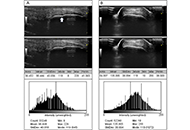 Validation of computer-based analysis of static ultrasound images of patellar and Achilles tendon enthesis territoriesOpen AccessOriginal ArticleAim: The aim of the present study is to conduct interobserver and intra-observer validation of computer analysis of static ultrasound images of entheseal territories of the Achilles and distal pa...Carlos A. Guillén-Astete ... Mónica Vázquez-DíazPublished: May 15, 2024 Explor Musculoskeletal Dis. DOI: 10.37349/emd.2024.00044
Validation of computer-based analysis of static ultrasound images of patellar and Achilles tendon enthesis territoriesOpen AccessOriginal ArticleAim: The aim of the present study is to conduct interobserver and intra-observer validation of computer analysis of static ultrasound images of entheseal territories of the Achilles and distal pa...Carlos A. Guillén-Astete ... Mónica Vázquez-DíazPublished: May 15, 2024 Explor Musculoskeletal Dis. DOI: 10.37349/emd.2024.00044 Hip sonography in HungaryOpen AccessPerspectiveThe diagnosis of hip dysplasia has developed very differently in different countries over the last few decades. The development and current situation in Hungary is described in this paper. The Ortol...Beat DubsPublished: April 17, 2024 Explor Musculoskeletal Dis. DOI: 10.37349/emd.2024.00041
Hip sonography in HungaryOpen AccessPerspectiveThe diagnosis of hip dysplasia has developed very differently in different countries over the last few decades. The development and current situation in Hungary is described in this paper. The Ortol...Beat DubsPublished: April 17, 2024 Explor Musculoskeletal Dis. DOI: 10.37349/emd.2024.00041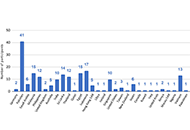 Teleteaching in paediatric rheumatology: an Asia Pacific League of Associations for Rheumatology experienceOpen AccessOriginal ArticleAim: To evaluate the reach and potential effectiveness of teleteaching of health providers in paediatric rheumatology by observing the pattern of sessions, attendance, and attendees’ feedback i...Sumaira Farman ... Saira Elaine Anwer KhanPublished: April 17, 2024 Explor Musculoskeletal Dis. DOI: 10.37349/emd.2024.00042
Teleteaching in paediatric rheumatology: an Asia Pacific League of Associations for Rheumatology experienceOpen AccessOriginal ArticleAim: To evaluate the reach and potential effectiveness of teleteaching of health providers in paediatric rheumatology by observing the pattern of sessions, attendance, and attendees’ feedback i...Sumaira Farman ... Saira Elaine Anwer KhanPublished: April 17, 2024 Explor Musculoskeletal Dis. DOI: 10.37349/emd.2024.00042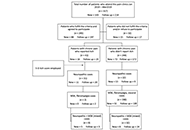 Measuring itch occurrence in various chronic pain conditions: across sectional studyOpen AccessOriginal ArticleAim: The relationship between chronic pain conditions and itch occurrence has been studied; however, reports on itch among patients with different chronic pain conditions are limited. It is also ...Wael Saleem, Marco MarcusPublished: April 10, 2024 Explor Musculoskeletal Dis. DOI: 10.37349/emd.2024.00039
Measuring itch occurrence in various chronic pain conditions: across sectional studyOpen AccessOriginal ArticleAim: The relationship between chronic pain conditions and itch occurrence has been studied; however, reports on itch among patients with different chronic pain conditions are limited. It is also ...Wael Saleem, Marco MarcusPublished: April 10, 2024 Explor Musculoskeletal Dis. DOI: 10.37349/emd.2024.00039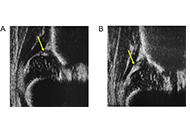 Hip sonography: thirty-four years of experience in ItalyOpen AccessReviewThis paper provides a review of the years of experience of hip sonography since the first ultrasound (US) course in Italy in 1987. Clinical and US findings were correlated in 1,000 newborns examined...Maurizio De Pellegrin ... Nicola GuindaniPublished: April 10, 2024 Explor Musculoskeletal Dis. DOI: 10.37349/emd.2024.00040
Hip sonography: thirty-four years of experience in ItalyOpen AccessReviewThis paper provides a review of the years of experience of hip sonography since the first ultrasound (US) course in Italy in 1987. Clinical and US findings were correlated in 1,000 newborns examined...Maurizio De Pellegrin ... Nicola GuindaniPublished: April 10, 2024 Explor Musculoskeletal Dis. DOI: 10.37349/emd.2024.00040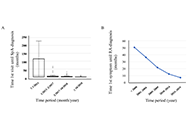 Opportunities of digital health technologies for rheumatology: from clinics to quality and researchOpen AccessPerspectiveRecent developments in digital health technologies are overwhelming, and their use in routine work is still difficult to anticipate. This narrative review summarizes the concept of consecutive cohor...Michael Schirmer ... Johannes D. PalluaPublished: April 08, 2024 Explor Musculoskeletal Dis. DOI: 10.37349/emd.2024.00037
Opportunities of digital health technologies for rheumatology: from clinics to quality and researchOpen AccessPerspectiveRecent developments in digital health technologies are overwhelming, and their use in routine work is still difficult to anticipate. This narrative review summarizes the concept of consecutive cohor...Michael Schirmer ... Johannes D. PalluaPublished: April 08, 2024 Explor Musculoskeletal Dis. DOI: 10.37349/emd.2024.00037 Empowering rheumatology through digital health technologies: contributions and barriersOpen AccessPerspectiveRheumatology, the medical specialty dealing with the diagnosis and treatment of rheumatic and musculoskeletal diseases (RMDs), is evolving with the emergence of digital health technologies, such as ...Diego Benavent ... Antonio Gómez-CentenoPublished: April 9, 2024 Explor Musculoskeletal Dis. DOI: 10.37349/emd.2024.00038
Empowering rheumatology through digital health technologies: contributions and barriersOpen AccessPerspectiveRheumatology, the medical specialty dealing with the diagnosis and treatment of rheumatic and musculoskeletal diseases (RMDs), is evolving with the emergence of digital health technologies, such as ...Diego Benavent ... Antonio Gómez-CentenoPublished: April 9, 2024 Explor Musculoskeletal Dis. DOI: 10.37349/emd.2024.00038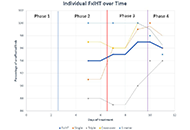 Return-to-play decision-making following ankle injury: a comprehensive case analysis of the functional hop testOpen AccessCase ReportFollowing anterior cruciate ligament (ACL) injury of the knee, the functional hop test (an averaging of 4 component hop tests including single-hop, triple-hop, cross-over-hop, and 6-meter-hop) is co...Michael Crinion ... Michael AgnonePublished: March 06, 2024 Explor Musculoskeletal Dis. DOI: 10.37349/emd.2024.00036
Return-to-play decision-making following ankle injury: a comprehensive case analysis of the functional hop testOpen AccessCase ReportFollowing anterior cruciate ligament (ACL) injury of the knee, the functional hop test (an averaging of 4 component hop tests including single-hop, triple-hop, cross-over-hop, and 6-meter-hop) is co...Michael Crinion ... Michael AgnonePublished: March 06, 2024 Explor Musculoskeletal Dis. DOI: 10.37349/emd.2024.00036 Newborn hip screening experience in TürkiyeOpen AccessMini ReviewIn this review article, newborn hip screening experience in Türkiye was summarized. The nationwide newborn hip screening program was officially initiated in 2013. The program currently includes the...Hakan Ömeroğlu ... Feza KorkusuzPublished: February 18, 2024 Explor Musculoskeletal Dis. DOI: 10.37349/emd.2024.00035
Newborn hip screening experience in TürkiyeOpen AccessMini ReviewIn this review article, newborn hip screening experience in Türkiye was summarized. The nationwide newborn hip screening program was officially initiated in 2013. The program currently includes the...Hakan Ömeroğlu ... Feza KorkusuzPublished: February 18, 2024 Explor Musculoskeletal Dis. DOI: 10.37349/emd.2024.00035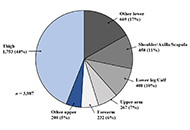 Soft tissue sarcoma: clinical recognition and approach to the loneliest cancerOpen AccessReviewSoft tissue sarcoma (STS) is a rare malignancy with a high incidence. Early diagnosis can reduce the rate of amputations and increase survival, however, this is typically delayed. The diagnosis and ...Sujan Shakya ... Xiang ZhouPublished: February 06, 2024 Explor Musculoskeletal Dis. DOI: 10.37349/emd.2024.00034
Soft tissue sarcoma: clinical recognition and approach to the loneliest cancerOpen AccessReviewSoft tissue sarcoma (STS) is a rare malignancy with a high incidence. Early diagnosis can reduce the rate of amputations and increase survival, however, this is typically delayed. The diagnosis and ...Sujan Shakya ... Xiang ZhouPublished: February 06, 2024 Explor Musculoskeletal Dis. DOI: 10.37349/emd.2024.00034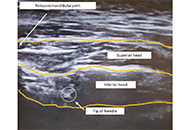 Participatory action ultrasound imaging in increasing clinician confidence with new approaches to trigger point dry needling of the lateral pterygoidOpen AccessCase ReportUpon self-reflection, some clinicians privately confess a lack of confidence in being able to safely perform trigger point dry needling (TrPDN) or trigger point injection (TrPI) on craniofacial musc...Andrew Ball ... Jordan SpennatoPublished: February 05, 2024 Explor Musculoskeletal Dis. DOI: 10.37349/emd.2024.00033
Participatory action ultrasound imaging in increasing clinician confidence with new approaches to trigger point dry needling of the lateral pterygoidOpen AccessCase ReportUpon self-reflection, some clinicians privately confess a lack of confidence in being able to safely perform trigger point dry needling (TrPDN) or trigger point injection (TrPI) on craniofacial musc...Andrew Ball ... Jordan SpennatoPublished: February 05, 2024 Explor Musculoskeletal Dis. DOI: 10.37349/emd.2024.00033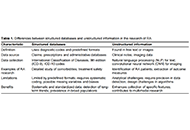 Redefining comorbidity understanding in rheumatoid arthritis through novel approaches using real-world dataOpen AccessPerspectiveRheumatoid arthritis (RA) is a prevalent chronic disease that is associated with numerous comorbidities. Accurate assessment of these coexisting conditions, as reported by clinicians, is critical fo...Diego Benavent, Chamaida Plasencia-RodríguezPublished: February 01, 2024 Explor Musculoskeletal Dis. DOI: 10.37349/emd.2024.00032
Redefining comorbidity understanding in rheumatoid arthritis through novel approaches using real-world dataOpen AccessPerspectiveRheumatoid arthritis (RA) is a prevalent chronic disease that is associated with numerous comorbidities. Accurate assessment of these coexisting conditions, as reported by clinicians, is critical fo...Diego Benavent, Chamaida Plasencia-RodríguezPublished: February 01, 2024 Explor Musculoskeletal Dis. DOI: 10.37349/emd.2024.00032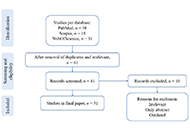 Scoping review on remote disease monitoring in rheumatoid arthritis: does it actually help the patient?Open AccessReviewRemote monitoring technologies (RMTs) are an emerging tool for assessing, monitoring, and following up on patients with chronic diseases including autoimmune rheumatic diseases (AIRDs). The best use...Prakashini Mruthyunjaya ... Debashish DandaPublished: January 22, 2024 Explor Musculoskeletal Dis. DOI: 10.37349/emd.2024.00030
Scoping review on remote disease monitoring in rheumatoid arthritis: does it actually help the patient?Open AccessReviewRemote monitoring technologies (RMTs) are an emerging tool for assessing, monitoring, and following up on patients with chronic diseases including autoimmune rheumatic diseases (AIRDs). The best use...Prakashini Mruthyunjaya ... Debashish DandaPublished: January 22, 2024 Explor Musculoskeletal Dis. DOI: 10.37349/emd.2024.00030 Multifaceted aspects of chronic disease: do diffuse idiopathic skeletal hyperostosis affect the quality of life?Open AccessReviewDiffuse idiopathic skeletal hyperostosis (DISH) is a common condition that affects the spine and peripheral joints, characterized by the progressive ossification of ligaments and tendons. It is a no...Greta Pellegrino ... Piercarlo Sarzi-PuttiniPublished: January 23, 2024 Explor Musculoskeletal Dis. DOI: 10.37349/emd.2024.00031
Multifaceted aspects of chronic disease: do diffuse idiopathic skeletal hyperostosis affect the quality of life?Open AccessReviewDiffuse idiopathic skeletal hyperostosis (DISH) is a common condition that affects the spine and peripheral joints, characterized by the progressive ossification of ligaments and tendons. It is a no...Greta Pellegrino ... Piercarlo Sarzi-PuttiniPublished: January 23, 2024 Explor Musculoskeletal Dis. DOI: 10.37349/emd.2024.00031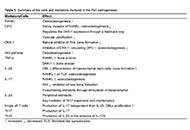 Psoriasis, bone and bowel: a comprehensive review and new insightsOpen AccessReviewPsoriasis is a chronic immune-mediated disorder affecting about 2% of the population worldwide which is associated with significant morbidity. The disease usually presents as raised, well-demarcated...Fakhreddin SaboonihaPublished: January 18, 2024 Explor Musculoskeletal Dis. DOI: 10.37349/emd.2024.00029
Psoriasis, bone and bowel: a comprehensive review and new insightsOpen AccessReviewPsoriasis is a chronic immune-mediated disorder affecting about 2% of the population worldwide which is associated with significant morbidity. The disease usually presents as raised, well-demarcated...Fakhreddin SaboonihaPublished: January 18, 2024 Explor Musculoskeletal Dis. DOI: 10.37349/emd.2024.00029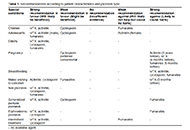 How should we do in the selection and follow-up of systemic conventional treatments in psoriasis?Open AccessReviewThere is an increasing need for appropriate effective treatment and long-term disease control in patients with psoriasis because of the decreased quality of life, increased physicosocial deficits an...Sevgi AkarsuPublished: December 05, 2023 Explor Musculoskeletal Dis. DOI: 10.37349/emd.2023.00026
How should we do in the selection and follow-up of systemic conventional treatments in psoriasis?Open AccessReviewThere is an increasing need for appropriate effective treatment and long-term disease control in patients with psoriasis because of the decreased quality of life, increased physicosocial deficits an...Sevgi AkarsuPublished: December 05, 2023 Explor Musculoskeletal Dis. DOI: 10.37349/emd.2023.00026 Calcium pyrophosphate crystal deposition disease—what’s new?Open AccessEditorialJürgen BraunPublished: December 06, 2023 Explor Musculoskeletal Dis. DOI: 10.37349/emd.2023.00027
Calcium pyrophosphate crystal deposition disease—what’s new?Open AccessEditorialJürgen BraunPublished: December 06, 2023 Explor Musculoskeletal Dis. DOI: 10.37349/emd.2023.00027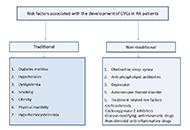 Rheumatoid arthritis and cardiovascular comorbiditiesOpen AccessReviewRheumatoid arthritis (RA) is the most common rheumatologic disease characterized by inflammation with a definite relationship with heart disease. Impaired immunity, chronic inflammation, genetic sus...Uğur Özkan ... Murat BirtanePublished: December 06, 2023 Explor Musculoskeletal Dis. DOI: 10.37349/emd.2023.00028
Rheumatoid arthritis and cardiovascular comorbiditiesOpen AccessReviewRheumatoid arthritis (RA) is the most common rheumatologic disease characterized by inflammation with a definite relationship with heart disease. Impaired immunity, chronic inflammation, genetic sus...Uğur Özkan ... Murat BirtanePublished: December 06, 2023 Explor Musculoskeletal Dis. DOI: 10.37349/emd.2023.00028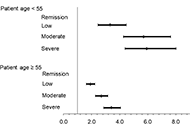 Impact of disease activity on patient-reported subjective cognitive decline in patients with rheumatoid arthritisOpen AccessOriginal ArticleAim: To evaluate the association of disease activity with patient-reported subjective cognitive decline (SCD) in patients with rheumatoid arthritis (RA) stratified by age. Methods: A cross-...Ozlem Pala ... Joel M. KremerPublished: December 05, 2023 Explor Musculoskeletal Dis. DOI: 10.37349/emd.2023.00025
Impact of disease activity on patient-reported subjective cognitive decline in patients with rheumatoid arthritisOpen AccessOriginal ArticleAim: To evaluate the association of disease activity with patient-reported subjective cognitive decline (SCD) in patients with rheumatoid arthritis (RA) stratified by age. Methods: A cross-...Ozlem Pala ... Joel M. KremerPublished: December 05, 2023 Explor Musculoskeletal Dis. DOI: 10.37349/emd.2023.00025 Diffuse idiopathic skeletal hyperostosis, beyond the musculoskeletal systemOpen AccessReviewIt has been suggested that diffuse idiopathic skeletal hyperostosis (DISH), a skeletal disease characterized by the ligamentous ossification of the anterolateral spine, is a radiological entity with...Fabiola Atzeni ... Reuven MaderPublished: December 04, 2023 Explor Musculoskeletal Dis. DOI: 10.37349/emd.2023.00024
Diffuse idiopathic skeletal hyperostosis, beyond the musculoskeletal systemOpen AccessReviewIt has been suggested that diffuse idiopathic skeletal hyperostosis (DISH), a skeletal disease characterized by the ligamentous ossification of the anterolateral spine, is a radiological entity with...Fabiola Atzeni ... Reuven MaderPublished: December 04, 2023 Explor Musculoskeletal Dis. DOI: 10.37349/emd.2023.00024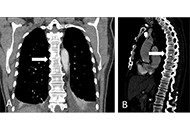 Diffuse idiopathic skeletal hyperostosis and axial spondyloarthritis—similarities and differencesOpen AccessReviewDiffuse idiopathic skeletal hyperostosis (DISH) and axial spondyloarthritis (axSpA) are diseases with inflammatory involvement of the axial skeleton that can result in new bone formation that may le...David Kiefer ... Xenofon BaraliakosPublished: November 20, 2023 Explor Musculoskeletal Dis. DOI: 10.37349/emd.2023.00022
Diffuse idiopathic skeletal hyperostosis and axial spondyloarthritis—similarities and differencesOpen AccessReviewDiffuse idiopathic skeletal hyperostosis (DISH) and axial spondyloarthritis (axSpA) are diseases with inflammatory involvement of the axial skeleton that can result in new bone formation that may le...David Kiefer ... Xenofon BaraliakosPublished: November 20, 2023 Explor Musculoskeletal Dis. DOI: 10.37349/emd.2023.00022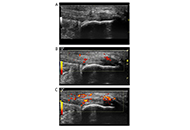 Relationship between tendon elastography and clinical and ultrasound enthesitis scores in patients with psoriasis or psoriatic arthritisOpen AccessOriginal ArticleAim: To determine the existence of a correlation between the elastographic study of the patellar and Achilles tendons and the enthesis evaluation in patients with psoriasis with or without psoria...Carlos A. Guillén-Astete ... Mónica Vázquez-DíazPublished: November 20, 2023 Explor Musculoskeletal Dis. DOI: 10.37349/emd.2023.00023
Relationship between tendon elastography and clinical and ultrasound enthesitis scores in patients with psoriasis or psoriatic arthritisOpen AccessOriginal ArticleAim: To determine the existence of a correlation between the elastographic study of the patellar and Achilles tendons and the enthesis evaluation in patients with psoriasis with or without psoria...Carlos A. Guillén-Astete ... Mónica Vázquez-DíazPublished: November 20, 2023 Explor Musculoskeletal Dis. DOI: 10.37349/emd.2023.00023 Nutritional problems in rheumatoid arthritis patients with temporomandibular joint involvementOpen AccessPerspectiveRheumatoid arthritis (RA) is an inflammatory arthritis that affects synovial joints, and it is not surprising that the temporomandibular joint (TMJ), a synovial joint, is also affected. However, TMJ...Manolya Ilhanli, Ilker IlhanliPublished: October 31, 2023 Explor Musculoskeletal Dis. DOI: 10.37349/emd.2023.00020
Nutritional problems in rheumatoid arthritis patients with temporomandibular joint involvementOpen AccessPerspectiveRheumatoid arthritis (RA) is an inflammatory arthritis that affects synovial joints, and it is not surprising that the temporomandibular joint (TMJ), a synovial joint, is also affected. However, TMJ...Manolya Ilhanli, Ilker IlhanliPublished: October 31, 2023 Explor Musculoskeletal Dis. DOI: 10.37349/emd.2023.00020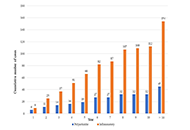 Association of mutations in hemochromatosis genes with clinical severity of calcium pyrophosphate arthritisOpen AccessOriginal ArticleAims: To study factors associated with the development of calcium pyrophosphate (CPP) arthritis and the severity phenotype. Methods: Transversal case-control study. Cases had to be confirme...Joana Atxotegi-Saenz de Buruaga ... Fernando Perez-RuizPublished: October 31, 2023 Explor Musculoskeletal Dis. DOI: 10.37349/emd.2023.00021
Association of mutations in hemochromatosis genes with clinical severity of calcium pyrophosphate arthritisOpen AccessOriginal ArticleAims: To study factors associated with the development of calcium pyrophosphate (CPP) arthritis and the severity phenotype. Methods: Transversal case-control study. Cases had to be confirme...Joana Atxotegi-Saenz de Buruaga ... Fernando Perez-RuizPublished: October 31, 2023 Explor Musculoskeletal Dis. DOI: 10.37349/emd.2023.00021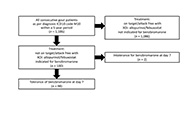 Lessons to be learned from real life data based on 98 gout patients using benzbromaroneOpen AccessOriginal ArticleAim: This study aims to analyze the efficacy and safety of benzbromarone as uricosuric, in a real-life clinical setting of a retrospective hospital-based gout cohort. Methods: Data from gou...Ioana Hotea ... Tim L. JansenPublished: October 30, 2023 Explor Musculoskeletal Dis. DOI: 10.37349/emd.2023.00019
Lessons to be learned from real life data based on 98 gout patients using benzbromaroneOpen AccessOriginal ArticleAim: This study aims to analyze the efficacy and safety of benzbromarone as uricosuric, in a real-life clinical setting of a retrospective hospital-based gout cohort. Methods: Data from gou...Ioana Hotea ... Tim L. JansenPublished: October 30, 2023 Explor Musculoskeletal Dis. DOI: 10.37349/emd.2023.00019 Genetic basis for skeletal new bone formationOpen AccessReviewBone formation is a complex process that occurs throughout life, and is normally limited to the skeletal system. In bone formation, osteoprogenitor cells follow several developmental stages, includi...Bruna Parreira ... Jácome Bruges-ArmasPublished: October 23, 2023 Explor Musculoskeletal Dis. DOI: 10.37349/emd.2023.00018
Genetic basis for skeletal new bone formationOpen AccessReviewBone formation is a complex process that occurs throughout life, and is normally limited to the skeletal system. In bone formation, osteoprogenitor cells follow several developmental stages, includi...Bruna Parreira ... Jácome Bruges-ArmasPublished: October 23, 2023 Explor Musculoskeletal Dis. DOI: 10.37349/emd.2023.00018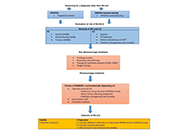 Interstitial lung disease in patients with rheumatoid arthritis: a narrative reviewOpen AccessReviewRheumatoid arthritis (RA) is a chronic immune-mediated inflammatory disease of unknown origin. Although it mainly affects joints, it can have extra-articular manifestations, with the lung being one ...Gloria Candelas Rodríguez, Virginia VillaverdePublished: October 20, 2023 Explor Musculoskeletal Dis. DOI: 10.37349/emd.2023.00017
Interstitial lung disease in patients with rheumatoid arthritis: a narrative reviewOpen AccessReviewRheumatoid arthritis (RA) is a chronic immune-mediated inflammatory disease of unknown origin. Although it mainly affects joints, it can have extra-articular manifestations, with the lung being one ...Gloria Candelas Rodríguez, Virginia VillaverdePublished: October 20, 2023 Explor Musculoskeletal Dis. DOI: 10.37349/emd.2023.00017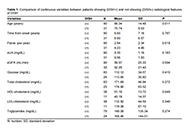 Prevalence and factors associated to diffuse idiopathic skeletal hyperostosis in goutOpen AccessOriginal ArticleAim: To evaluate the prevalence, associated factors, and the impact of diffuse idiopathic skeletal hyperostosis (DISH) in patients with gout. Methods: Patients with gout entering into an in...Fernando Pérez-Ruiz ... Ana María Herrero-BeitesPublished: September 27, 2023 Explor Musculoskeletal Dis. DOI: 10.37349/emd.2023.00016
Prevalence and factors associated to diffuse idiopathic skeletal hyperostosis in goutOpen AccessOriginal ArticleAim: To evaluate the prevalence, associated factors, and the impact of diffuse idiopathic skeletal hyperostosis (DISH) in patients with gout. Methods: Patients with gout entering into an in...Fernando Pérez-Ruiz ... Ana María Herrero-BeitesPublished: September 27, 2023 Explor Musculoskeletal Dis. DOI: 10.37349/emd.2023.00016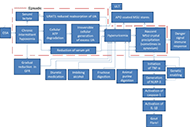 Premature mortality with gout and hyperuricemia may be reduced by early resolution of comorbid obstructive sleep apneaOpen AccessReviewHyperuricemia is known to be a necessary and causal condition for gout, but much more prevalent than gout. Medicine has standardized treatments for gout, but has no such determination for asymptomat...Burton AbramsPublished: August 31, 2023 Explor Musculoskeletal Dis. DOI: 10.37349/emd.2023.00015
Premature mortality with gout and hyperuricemia may be reduced by early resolution of comorbid obstructive sleep apneaOpen AccessReviewHyperuricemia is known to be a necessary and causal condition for gout, but much more prevalent than gout. Medicine has standardized treatments for gout, but has no such determination for asymptomat...Burton AbramsPublished: August 31, 2023 Explor Musculoskeletal Dis. DOI: 10.37349/emd.2023.00015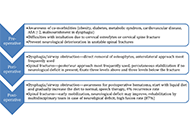 Perioperative management, operative techniques, and pitfalls in the surgical treatment of patients with diffuse idiopathic skeletal hyperostosis: a narrative reviewOpen AccessReviewDiffuse idiopathic skeletal hyperostosis (DISH) can lead to dysphagia, airway obstruction, and unstable vertebral fractures. Surgery can be performed to relieve cervical compression or stabilize fra...Netanja I. Harlianto ... Jorrit-Jan VerlaanPublished: August 29, 2023 Explor Musculoskeletal Dis. DOI: 10.37349/emd.2023.00013
Perioperative management, operative techniques, and pitfalls in the surgical treatment of patients with diffuse idiopathic skeletal hyperostosis: a narrative reviewOpen AccessReviewDiffuse idiopathic skeletal hyperostosis (DISH) can lead to dysphagia, airway obstruction, and unstable vertebral fractures. Surgery can be performed to relieve cervical compression or stabilize fra...Netanja I. Harlianto ... Jorrit-Jan VerlaanPublished: August 29, 2023 Explor Musculoskeletal Dis. DOI: 10.37349/emd.2023.00013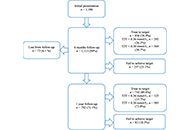 Real-life results of urate-driven pharmacotherapy with three urate lowering drugs in gout: allopurinol, febuxostat and benzbromaroneOpen AccessOriginal ArticleAim: This study aims to assess outcomes of gout patients from the treat to target (T2T) perspective at 6 months and 12 months while using urate lowering therapy (ULT): allopurinol, febuxostat, an...Ioana Hotea ... Tim L. JansenPublished: August 30, 2023 Explor Musculoskeletal Dis. DOI: 10.37349/emd.2023.00014
Real-life results of urate-driven pharmacotherapy with three urate lowering drugs in gout: allopurinol, febuxostat and benzbromaroneOpen AccessOriginal ArticleAim: This study aims to assess outcomes of gout patients from the treat to target (T2T) perspective at 6 months and 12 months while using urate lowering therapy (ULT): allopurinol, febuxostat, an...Ioana Hotea ... Tim L. JansenPublished: August 30, 2023 Explor Musculoskeletal Dis. DOI: 10.37349/emd.2023.00014 Significance of autoantibodies in diagnostics of systemic vasculitisOpen AccessReviewSystemic vasculitis is a heterogeneous group of disorders characterized by inflammation and necrosis in the vessel wall. Patients usually present a quite broad spectrum of manifestations which vary ...Katarzyna Fischer, Marek BrzoskoPublished: July 17, 2023 Explor Musculoskeletal Dis. DOI: 10.37349/emd.2023.00012
Significance of autoantibodies in diagnostics of systemic vasculitisOpen AccessReviewSystemic vasculitis is a heterogeneous group of disorders characterized by inflammation and necrosis in the vessel wall. Patients usually present a quite broad spectrum of manifestations which vary ...Katarzyna Fischer, Marek BrzoskoPublished: July 17, 2023 Explor Musculoskeletal Dis. DOI: 10.37349/emd.2023.00012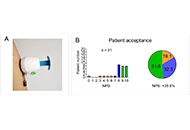 Patient self-sampling for remote human leucocyte antigen-B27 analysisOpen AccessLetter to the EditorHannah Labinsky ... Johannes KnitzaPublished: June 30, 2023 Explor Musculoskeletal Dis. DOI: 10.37349/emd.2023.00010
Patient self-sampling for remote human leucocyte antigen-B27 analysisOpen AccessLetter to the EditorHannah Labinsky ... Johannes KnitzaPublished: June 30, 2023 Explor Musculoskeletal Dis. DOI: 10.37349/emd.2023.00010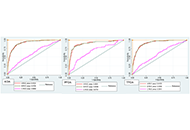 Morphological variations at the knee associated with osteoarthritis: a case-control study using data from the GOAL studyOpen AccessOriginal ArticleAim: To identify constitutional morphological features at the knee that associate with knee osteoarthritis (OA, KOA). Methods: This was a case-control study using data from the Genetics of ...Anand Ramachandran Nair ... Abhishek AbhishekPublished: June 30, 2023 Explor Musculoskeletal Dis. DOI: 10.37349/emd.2023.00011
Morphological variations at the knee associated with osteoarthritis: a case-control study using data from the GOAL studyOpen AccessOriginal ArticleAim: To identify constitutional morphological features at the knee that associate with knee osteoarthritis (OA, KOA). Methods: This was a case-control study using data from the Genetics of ...Anand Ramachandran Nair ... Abhishek AbhishekPublished: June 30, 2023 Explor Musculoskeletal Dis. DOI: 10.37349/emd.2023.00011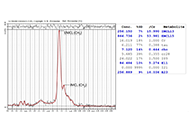 Quantitative magnetic resonance spectroscopy and imaging analysis of the lipid content in the psoas major and its association with intervertebral disc degeneration: a cross-sectional studyOpen AccessOriginal ArticleAim: It is shown that the diminished function of the psoas major is mainly associated with increased lipid content; nonetheless, whether the fat content of the psoas major is associated with inte...Izaya Ogon ... Atsushi TeramotoPublished: June 29, 2023 Explor Musculoskeletal Dis. DOI: 10.37349/emd.2023.00009
Quantitative magnetic resonance spectroscopy and imaging analysis of the lipid content in the psoas major and its association with intervertebral disc degeneration: a cross-sectional studyOpen AccessOriginal ArticleAim: It is shown that the diminished function of the psoas major is mainly associated with increased lipid content; nonetheless, whether the fat content of the psoas major is associated with inte...Izaya Ogon ... Atsushi TeramotoPublished: June 29, 2023 Explor Musculoskeletal Dis. DOI: 10.37349/emd.2023.00009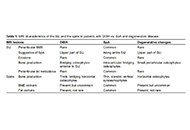 Is there a place for magnetic resonance imaging in diffuse idiopathic skeletal hyperostosis?Open AccessReviewDiffuse idiopathic skeletal hyperostosis (DISH) is a systemic condition characterized by the new bone formation and enthesopathies of the axial and peripheral skeleton. The diagnosis of DISH current...Iris EshedPublished: April 27, 2023 Explor Musculoskeletal Dis. DOI: 10.37349/emd.2023.00008
Is there a place for magnetic resonance imaging in diffuse idiopathic skeletal hyperostosis?Open AccessReviewDiffuse idiopathic skeletal hyperostosis (DISH) is a systemic condition characterized by the new bone formation and enthesopathies of the axial and peripheral skeleton. The diagnosis of DISH current...Iris EshedPublished: April 27, 2023 Explor Musculoskeletal Dis. DOI: 10.37349/emd.2023.00008 Quality of care, referral, and early diagnosis of axial spondyloarthritisOpen AccessEditorialJürgen Braun ... Xenofon BaraliakosPublished: April 12, 2023 Explor Musculoskeletal Dis. DOI: 10.37349/emd.2023.00007
Quality of care, referral, and early diagnosis of axial spondyloarthritisOpen AccessEditorialJürgen Braun ... Xenofon BaraliakosPublished: April 12, 2023 Explor Musculoskeletal Dis. DOI: 10.37349/emd.2023.00007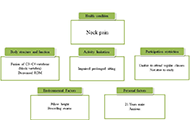 Physiotherapy management of a patient with neck pain having block vertebra: a case reportOpen AccessCase ReportCongenital fused/blocked vertebrae are an incidental finding in most cases. It remains asymptomatic unless there is a traumatic event or there is an increased biomechanical load which may be attribu...Sarah Quais, Ammar SuhailPublished: March 27, 2023 Explor Musculoskeletal Dis. DOI: 10.37349/emd.2023.00006
Physiotherapy management of a patient with neck pain having block vertebra: a case reportOpen AccessCase ReportCongenital fused/blocked vertebrae are an incidental finding in most cases. It remains asymptomatic unless there is a traumatic event or there is an increased biomechanical load which may be attribu...Sarah Quais, Ammar SuhailPublished: March 27, 2023 Explor Musculoskeletal Dis. DOI: 10.37349/emd.2023.00006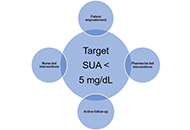 Towards a more ambitious uricemia target to improve joint and cardiovascular outcomes in goutOpen AccessPerspectiveGout is the most common inflammatory arthritis and a global health problem. In addition to joint involvement, urate crystals induce chronic inflammation, leading to increased cardiovascular risk in gout. Thus, cardiovascular disease is the leading cause of death in gout and numerous studies have revealed an increase in cardiovascular-related mortality in these patients. However, despite the efficacy of urate-lowering therapies, such as allopurinol and febuxostat, suboptimal management of gout and poor adherence continue to make it difficult to achieve better outcomes. Treat-to-target strategy may help change this, as in other diseases such as rheumatoid arthritis. Nevertheless, even with a well-defined clinical target (absence of flares and tophi disappearance), the numerical target [serum uric acid (SUA) < 5 mg/dL or < 6 mg/dL] still varies depending on current guidelines and consensus documents. Recently, several trials [Long-Term Cardiovascular Safety of Febuxostat Compared with Allopurinol in Patients with Gout (FAST), REasons for Geographic And Racial Differences in Stroke (REGARDS)] have shown better cardiovascular outcomes in those patients who achieve SUA levels < 5 mg/dL. Likewise, some observational studies, mostly based on imaging tests such as ultrasound and dual-energy computed tomography, have found better results in the magnitude and speed of reduction of urate joint deposition when SUA < 5 mg/dL is achieved. Based on an analysis of the available evidence, SUA < 5 mg/dL is postulated as a more ambitious target within the treat-to-target approach for the management of gout to achieve better joint and cardiovascular outcomes in patients with cardiovascular risk or severe disease....Enrique Calvo-Aranda, Fernando Perez-RuizPublished: February 27, 2023 Explor Musculoskeletal Dis. DOI: 10.37349/emd.2023.00004
Towards a more ambitious uricemia target to improve joint and cardiovascular outcomes in goutOpen AccessPerspectiveGout is the most common inflammatory arthritis and a global health problem. In addition to joint involvement, urate crystals induce chronic inflammation, leading to increased cardiovascular risk in gout. Thus, cardiovascular disease is the leading cause of death in gout and numerous studies have revealed an increase in cardiovascular-related mortality in these patients. However, despite the efficacy of urate-lowering therapies, such as allopurinol and febuxostat, suboptimal management of gout and poor adherence continue to make it difficult to achieve better outcomes. Treat-to-target strategy may help change this, as in other diseases such as rheumatoid arthritis. Nevertheless, even with a well-defined clinical target (absence of flares and tophi disappearance), the numerical target [serum uric acid (SUA) < 5 mg/dL or < 6 mg/dL] still varies depending on current guidelines and consensus documents. Recently, several trials [Long-Term Cardiovascular Safety of Febuxostat Compared with Allopurinol in Patients with Gout (FAST), REasons for Geographic And Racial Differences in Stroke (REGARDS)] have shown better cardiovascular outcomes in those patients who achieve SUA levels < 5 mg/dL. Likewise, some observational studies, mostly based on imaging tests such as ultrasound and dual-energy computed tomography, have found better results in the magnitude and speed of reduction of urate joint deposition when SUA < 5 mg/dL is achieved. Based on an analysis of the available evidence, SUA < 5 mg/dL is postulated as a more ambitious target within the treat-to-target approach for the management of gout to achieve better joint and cardiovascular outcomes in patients with cardiovascular risk or severe disease....Enrique Calvo-Aranda, Fernando Perez-RuizPublished: February 27, 2023 Explor Musculoskeletal Dis. DOI: 10.37349/emd.2023.00004 Infection after reconstruction of the anterior cruciate ligamentOpen AccessOriginal ArticleAim: Postoperative infection after the anterior cruciate ligament reconstruction (ACLR) can destroy the knee cartilage, necessitate graft removal, and cause arthrofibrosis, instability, limitatio...Elisha Krasin ... Yaniv WarschawskiPublished: February 27, 2023 Explor Musculoskeletal Dis. DOI: 10.37349/emd.2023.00005
Infection after reconstruction of the anterior cruciate ligamentOpen AccessOriginal ArticleAim: Postoperative infection after the anterior cruciate ligament reconstruction (ACLR) can destroy the knee cartilage, necessitate graft removal, and cause arthrofibrosis, instability, limitatio...Elisha Krasin ... Yaniv WarschawskiPublished: February 27, 2023 Explor Musculoskeletal Dis. DOI: 10.37349/emd.2023.00005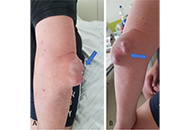 Similarities and differences between gouty arthritis and rheumatoid arthritis—an interesting case with a short look into the literatureOpen AccessCase ReportGout often presents as acute arthritis but may also present with chronic joint inflammation. For the diagnosis of an acute gout attack with its typical symptoms, the differentiation towards a bacter...David Kiefer ... Juergen BraunPublished: February 24, 2023 Explor Musculoskeletal Dis. DOI: 10.37349/emd.2023.00003
Similarities and differences between gouty arthritis and rheumatoid arthritis—an interesting case with a short look into the literatureOpen AccessCase ReportGout often presents as acute arthritis but may also present with chronic joint inflammation. For the diagnosis of an acute gout attack with its typical symptoms, the differentiation towards a bacter...David Kiefer ... Juergen BraunPublished: February 24, 2023 Explor Musculoskeletal Dis. DOI: 10.37349/emd.2023.00003 Utility of dimethylsulfoxide to preserve synovial fluid samples for microcrystal detection and identificationOpen AccessOriginal ArticleAims: To study whether the addition of dimethylsulfoxide (DMSO) to synovial fluid (SF) samples could be helpful to store frozen samples to improve the rates of detection and identification of cry...Fernando Pérez-Ruiz ... Juan J. Mateos-MazónPublished: February 21, 2023 Explor Musculoskeletal Dis. DOI: 10.37349/emd.2023.00002
Utility of dimethylsulfoxide to preserve synovial fluid samples for microcrystal detection and identificationOpen AccessOriginal ArticleAims: To study whether the addition of dimethylsulfoxide (DMSO) to synovial fluid (SF) samples could be helpful to store frozen samples to improve the rates of detection and identification of cry...Fernando Pérez-Ruiz ... Juan J. Mateos-MazónPublished: February 21, 2023 Explor Musculoskeletal Dis. DOI: 10.37349/emd.2023.00002 Opening editorial for exploration in musculoskeletal diseasesOpen AccessEditorialFernando Perez-RuizPublished: January 01, 2023 Explor Musculoskeletal Dis. DOI: 10.37349/emd.2022.00001
Opening editorial for exploration in musculoskeletal diseasesOpen AccessEditorialFernando Perez-RuizPublished: January 01, 2023 Explor Musculoskeletal Dis. DOI: 10.37349/emd.2022.00001 -